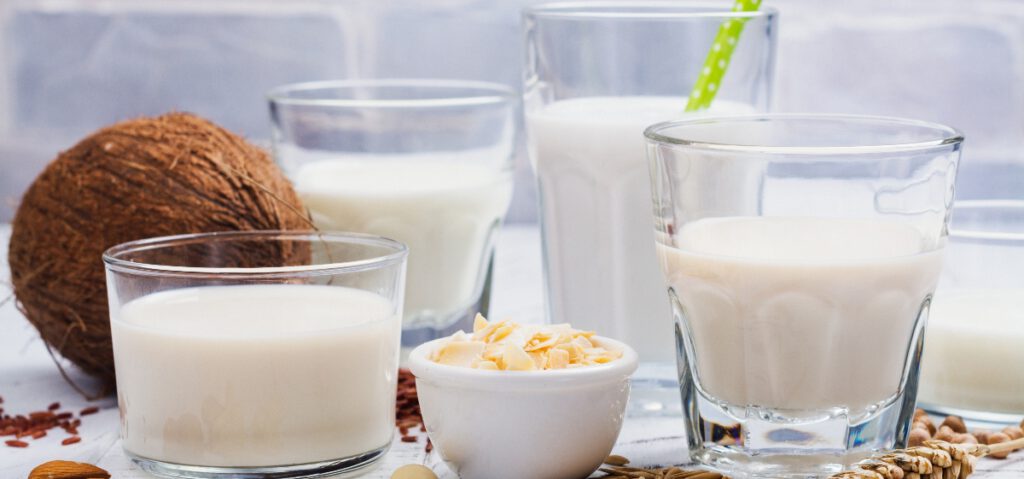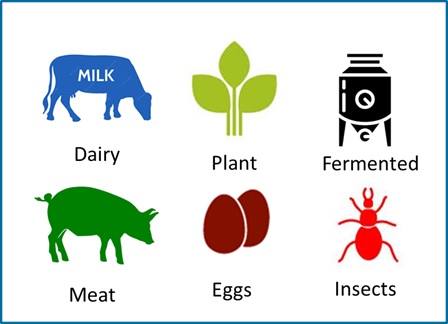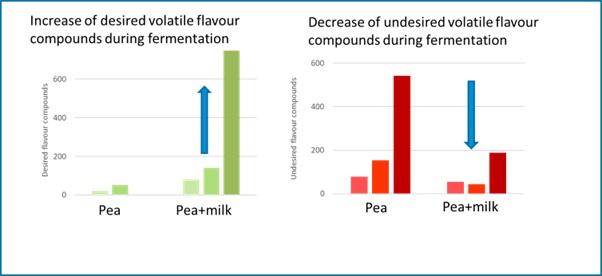Table of Contents
In this series of articles, NIZO Food Research Division Manager and FoodNavigator advisory panel member René Floris discusses some of the big issues in today’s food industry.
As the protein transition gathers steam, there are many new opportunities for the food and dairy industries. While much attention has been given to developing vegan alternatives, manufacturers are also turning towards ‘blended’ or ‘hybrid’ products that combine the advantages of animal-based and plant-based ingredients. Wim Engels, Senior Project Manager Fermentation, and Jolanda Lambert, Senior Project Manager Microbiology, discuss how a more holistic development approach is needed to truly optimise the benefits.

What are ‘hybrid’ foods or food ‘blends’?
These are products combining both animal and alternative, non-animal components: think protein, fat and carbohydrate.

Of course, products with both animal and plant components have always been around. But these hybrid foods are specifically targeted towards consumers who are interested in reducing their intake of meat or dairy and replacing it with alternatives, yet who still want products that closely resemble animal-based originals. This last can be hard to achieve with 100% plant ingredients, especially in terms of taste, texture and essential amino acid profiles.
What are the advantages of hybrid products?
With hybrid products, manufacturers can overcome some of the issues or challenges around either purely animal-based or alternative products, to offer ‘the best of both worlds’ and to reach new markets. Plant proteins, for example, tend to be less soluble than dairy proteins, which can result in dairy alternatives with a gritty mouthfeel, rather than a smooth, rich creaminess. By adding animal-based components, it is easier to achieve the familiar and desired tastes and textures, and also to deliver a high quality of digestible protein and bio-available amino acids. On the other hand, by adding plant ingredients to dairy products, manufacturers can make their costly or less sustainable animal-based ingredients go further, for example, enabling them to reach those new (flexitarian) customers who are interested in a more sustainable diet.
However, creating the ideal ‘fusion’ product takes more than simply mixing for example, a dairy product with a plant-based product. Firstly, because this approach requires two separate production channels for the individual components. But also because it doesn’t address the main challenges associated with hybrid products.
What are the challenges of developing hybrid products?
Plant proteins are known for having off-flavours, such as ‘beaniness’ or ‘grassiness’, which consumers don’t like in, for example, a yoghurt or milk product. Simply mixing plant and animal components in a dairy hybrid food might deliver ‘positive’ taste and texture elements such as a ‘cheesy’ flavour or ‘creamy’ mouthfeel. But it won’t eliminate those negative plant component flavours or textures.
Furthermore, you need to consider the textural issues. Plant proteins are generally globular and often have low solubility, which has a significant influence on mouthfeel. Dairy caseins, by contrast, are open or ‘unfolded’, resulting in attractive gelling and textural properties. But what happens when you combine them? We know from previous studies that there can be unexpected – and often surprisingly strong – effects when you mix proteins in a product. These can impact nutrition, sensory features, functionality and food safety. But they are hard to predict precisely, and that has to be kept in mind during development.
Why is food safety a particular challenge in hybrid foods?
Obviously, you have to consider the individual food safety challenges of the animal and the plant ingredients. But you also have to think about the impact combining them will have on your manufacturing process and on the microbial contaminants that may be introduced.
Generally, the food safety issues around dairy are well understood. However, we still have much to learn about food safety in plant ingredients, where the variety of contaminating microorganisms is much larger. Furthermore, spores of toxin-producing bacteria can make up a relatively large proportion of the total microbial count in plant-based products. These spores may be resistant to factors such as heat and acidification, potentially allowing them to survive the manufacturing process. Then, under the ‘right’ conditions, they can become metabolically active again, spoiling the product.
How can you solve the challenges of developing a hybrid plant-animal food?
Processing, preparation, and product design can all be used to unlock the potential of a promising hybrid, and solve the sensory and safety issues. That starts with a holistic development process that brings the plant and animal components together very early. Then, as you move forward, you can address each of the potential issues. This includes selecting the best ingredient combinations, but also modifying processing conditions. Last but not least, fermentation will also help to improve both the flavour and the safety of the product.

RF: How is fermentation different for a hybrid versus a 100% dairy or plant product?
In principle, there is no difference: you have a substrate containing sugar, you have a micro-organism, you put them together, and if conditions are right, fermentation occurs. What is different is our level of knowledge. We have thousands of years of experience with dairy fermentation, making cheese and yoghurt. But we are still learning about fermentation of plant-based components in such products. So, if you are making a plant-based yoghurt alternative, you have to identify, for example, the ‘right’ sugars and amino acids to make the microbes grow and create the ‘yoghurty’ flavours you want. By including dairy milk, which naturally provides lactose as a sugar (as well as citric acid), you get that desired flavour. Plus, the dairy fat is an excellent substrate for the dairy flavours.
You can also select your bacterial strain or mix based on the product you are creating. For example, a strain that is commonly used for dairy fermentation may give you more of the familiar flavours that consumers want. On the other hand, other bacteria may be very good at removing the off-flavours from plant proteins. So fermentation offers you a lot of options to tailor your product: it’s a question of balance. And if you do not want any ‘fermented’ flavour, bio-purification can play a role. It uses the proven techniques of fermentation, without enabling acidification, to deliver a neutral taste and smell.
How do we know fermentation works for hybrid foods?
We have been working on a proof of principle at NIZO. In tests with a hybrid drinkable yoghurt product, we found that, in general, acidification occurs, that the bacterial strains grow on it, and that plant off-flavours are reduced by the fermentation. We have also shown that when you add milk components to a plant-based product and ferment it, you get dairy flavours. We are therefore confident that fermentation will solve many of the challenges of hybrid foods, but it requires a scientific and multidisciplinary approach to optimise the benefits and the sensory experience. As part of the EU-funded E-MUSE project to investigate complex microbial ecosystems such as those in fermented foods products, NIZO will pay special attention to generating data during model hybrid cheese fermentation trials.
What is in the future for hybrid foods?
We have focussed here on combining a dairy or meat component with a plant component, but that is just the start. Our portfolio of protein ingredients to ‘mix and match’ can include everything from eggs to insects, lab-grown animal-free ‘animal’ proteins and precision fermentation proteins. These all offer exciting potential for manufactures to increase sustainability in the food chain while maintaining nutritional parity and keeping costs down. Furthermore, hybrid foods can include more than two types of components: what will happen if we mix three or more? Really, the possibilities are nearly endless.
Related cases
Related blogs
© NIZO 2025 | Sitemap - Privacy Statement - Cookie Statement - Terms & Conditions
Website by: Online Marketing Agency